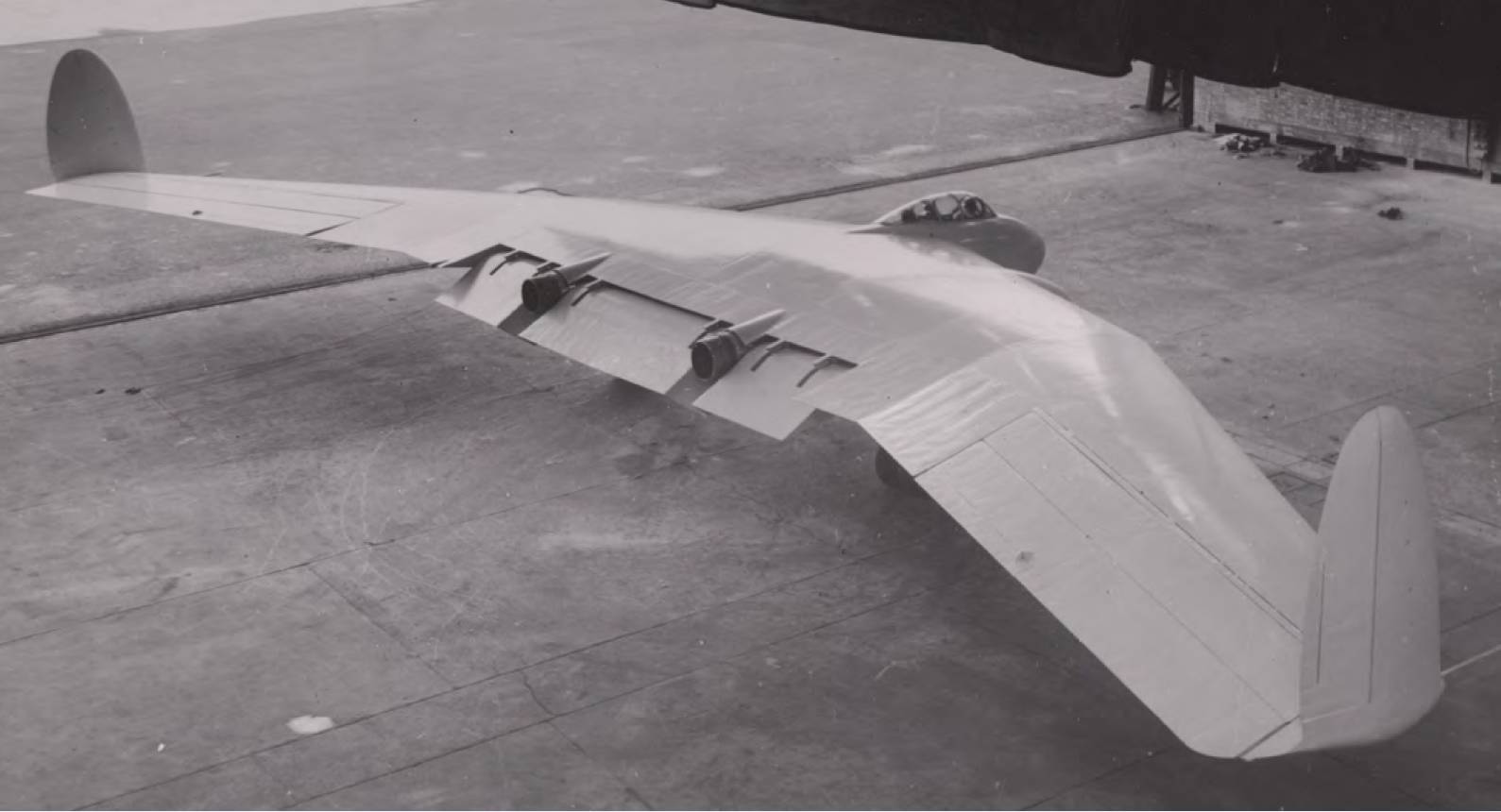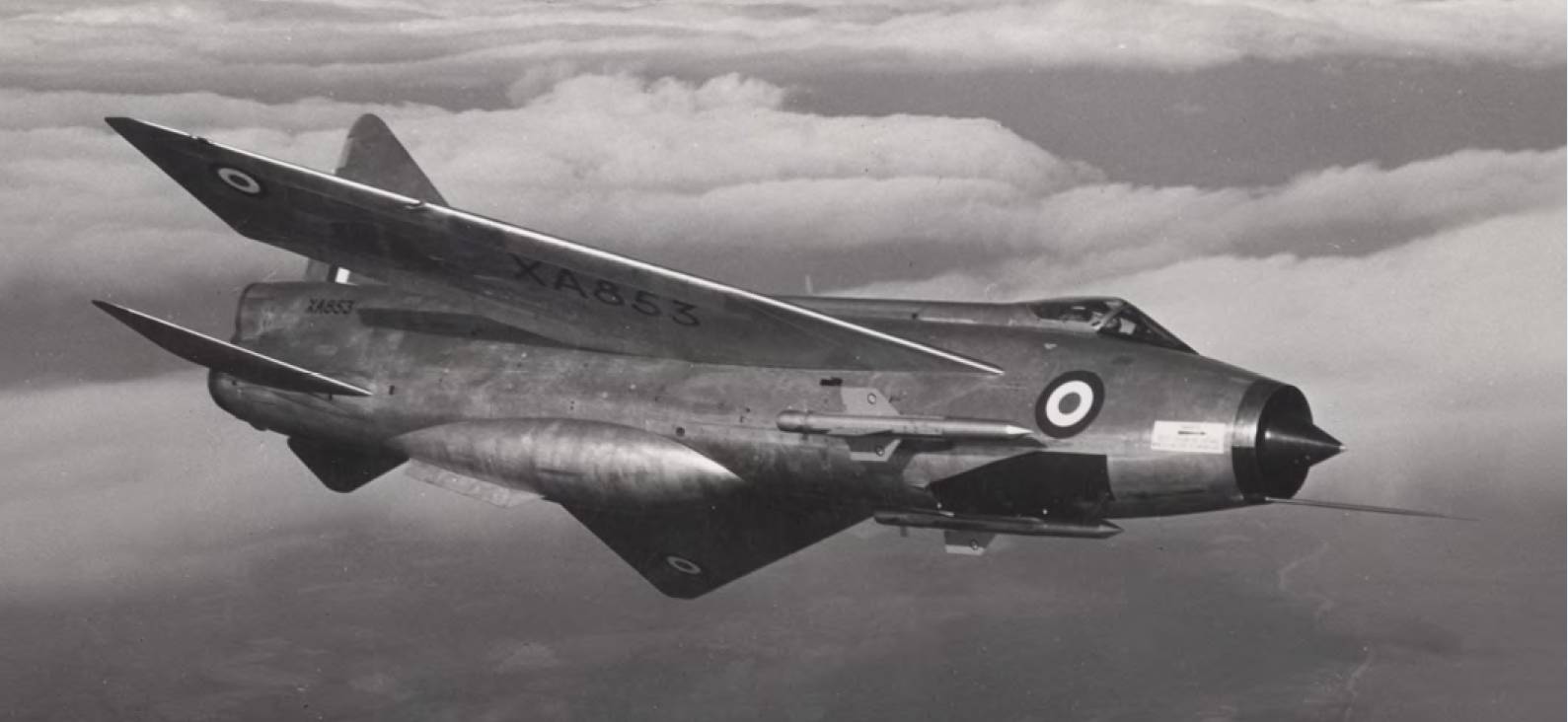Book Reviews
BRITISH SPECIAL PROJECTS
Flying Wings, Deltas and Tailless Designs
By Bill Rose
Fonthill, 2020, 288pp.
Ever since Project Cancelled was first published in 1975 there has been a steady stream of books on the subject of unflown design proposals. British Special Projects is the latest in this line.
Whereas others in the series usually deal with a particular type of aircraft – airliners, bombers, fighters, whatever – this book focuses on aeroplanes sharing a tailless configuration and it also includes aircraft which actually flew or even made it into volume production. How far such aircraft have anything in common, other than their unusual shape, might be open to question but it certainly makes for an interesting compendium. It is also unusual in that it covers this configuration of aircraft from the earliest days of piloted flight to the present time, embracing winged spacecraft along the way.
 Armstrong Whitworth AW52. Two AW52s were built to investigate the high-speed characteristics of a tail-less aircraft with laminar flow. On 30 May 1949, while diving at 320mph, the first prototype encountered a pitch oscillation which rapidly increased to incapacitating levels. With structural failure seemingly imminent, test pilot John Lancaster opted to eject using its Martin-Baker Mk1 ejection seat and thus became the first British pilot to eject in a ‘live’ emergency. RAeS (NAL).
Armstrong Whitworth AW52. Two AW52s were built to investigate the high-speed characteristics of a tail-less aircraft with laminar flow. On 30 May 1949, while diving at 320mph, the first prototype encountered a pitch oscillation which rapidly increased to incapacitating levels. With structural failure seemingly imminent, test pilot John Lancaster opted to eject using its Martin-Baker Mk1 ejection seat and thus became the first British pilot to eject in a ‘live’ emergency. RAeS (NAL).
The book is well-written and clearly well-researched. Some of the designs have been fully covered in several earlier publications, particularly aircraft such as the Gloster Javelin but many of the design propositions will be a revelation to the vast majority of readers. Certainly, few will be aware of British proposals for spaceplanes which included a piloted version of the Blue Steel stand-off bomb.
The three-view drawings, of which there are around 140, are commendably clear and produced to a constant standard, though some readers will have preferred the dimensions to be included within these drawings rather than given in end-of-chapter tables. One criticism that might be levelled is that the majority of photographs have already been extensively used in other books, though this possibly won’t detract from the book for readers unfamiliar with the subject matter.
Books like this make an important contribution to understanding the history of aircraft design
Although clearly having a strong fascination for tailless aircraft, the author does well to avoid using the book as a vehicle for his own views. It is all too easy to stray into expressing ‘if only’ judgements on cancelled projects, when in fact it is impossible to assess their likelihood of success. History has shown that the latter is dependent on many factors, of which technical merit and attainment of projected performance usually come second to changes in requirements, politics and lack of resources.
Books like this make an important contribution to understanding the history of aircraft design. They provide an insight into the minds of design engineers at a time when the state of the art was advancing fast and the future was far from clear. One can only admire their ambition and ingenuity.
Sir George Cox
CRAeS
ENGLISH ELECTRIC LIGHTNING
Genesis & Projects
By Tony Wilson
Tempest Books, 2021, 150pp, Illustrated, £12.99.
The English Electric Lightning remains the only supersonic fighter designed, developed and put into service entirely by the UK. The story of how the manufacturer first proposed its P.1 research aircraft in the late 1940s and then turned it into the Lightning during the 1950s has been covered in many publications but not in the very detailed way presented here.
 The second English Electric P1B Lightning, XA853. RAeS (NAL).
The second English Electric P1B Lightning, XA853. RAeS (NAL).
To start there is a splendid computer graphic on the cover showing how the P.1, as first envisaged in 1948, might have looked in flight. Moving inside the first four chapters describe ‘Origin and Initial Concepts’, ‘The Procurement Process and Environment’, ‘Configuration Development’ and ‘Weapon System Development’. Self-explanatory but a long series of three-view drawings show how the original P.1 was turned into the aircraft that flew in 1954 (backed up with brochure materials and data) while the author fills in with information describing the complex process of dealing with the Ministry, ie the customer. This might sound dry but the author’s easy writing style means this text is never heavy going.
There are reviews of other concurrent UK fighter programmes and the various threats presented by the Soviet Union which the new fighter would have to counter. The chapter on weaponry explains not only the difficulties of fitting new air-to-air missiles on to a new aircraft but how new and more capable versions of a missile could then disrupt the decision-making process.
The second half of the book moves on to ‘Lightning Projects’ with proposed developments of the Lightning itself, right through to a swing-wing version offered to the Navy in 1963. The projects include ground attack types, export offerings and pure fighter developments and, once again, further research and development in missile weaponry is revealed. There is nothing on the service history of the Lightning in here, just the complex process of turning proposals into real aeroplanes.
For anyone interested in the Lightning speciÿcally, or the design and development of ÿghter aircraft in general, this is a little gem!
The author is an advisor at BAe Systems Heritage Department at Warton and clearly has had a free hand searching through original English Electric documents and brochures but extensive use of the National Archives at Kew as well has ensured a balanced approach. Primary source material is listed in detail at the end of the book and it appears that no secondary (published) sources have been consulted. This reviewer must record that his name appears in the Acknowledgements but only for the contribution of some specific reference materials. Until receiving a copy of the book he had no experience of Mr Wilson’s written work whatsoever. Having read it now, he hopes there will be plenty more.
This volume is a modest-size but very complete work and, in general, the illustrations and, especially the drawings, are well reproduced on high quality paper. For anyone interested in the Lightning specifically, or the design and development of fighter aircraft in general, this is a little gem! Modellers will love the book as well.
Tony Buttler
 Armstrong Whitworth AW52. Two AW52s were built to investigate the high-speed characteristics of a tail-less aircraft with laminar flow. On 30 May 1949, while diving at 320mph, the first prototype encountered a pitch oscillation which rapidly increased to incapacitating levels. With structural failure seemingly imminent, test pilot John Lancaster opted to eject using its Martin-Baker Mk1 ejection seat and thus became the first British pilot to eject in a ‘live’ emergency. RAeS (NAL).
Armstrong Whitworth AW52. Two AW52s were built to investigate the high-speed characteristics of a tail-less aircraft with laminar flow. On 30 May 1949, while diving at 320mph, the first prototype encountered a pitch oscillation which rapidly increased to incapacitating levels. With structural failure seemingly imminent, test pilot John Lancaster opted to eject using its Martin-Baker Mk1 ejection seat and thus became the first British pilot to eject in a ‘live’ emergency. RAeS (NAL).